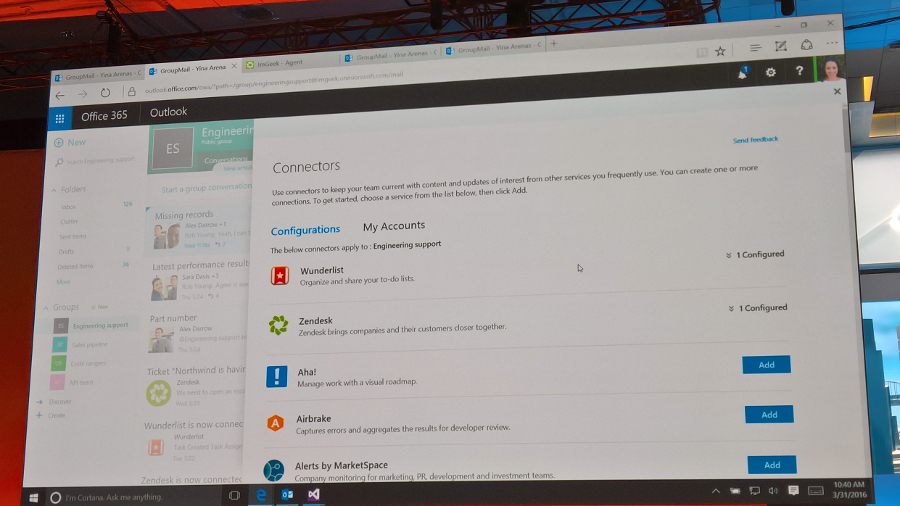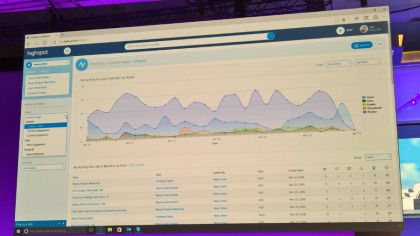Office isn't just about documents – it'll help order your morning coffee
And all manner of other clever tricks…

Office isn't just the familiar programs like Outlook and Word, and the services like Exchange Online and Skype for Business. It's also a platform that you can run other apps and services on, like the Starbucks app that lets you send someone a Starbucks gift card right inside Outlook, or find a specific Starbucks and use it as a location in your calendar (you get a map and a link to pre-order coffee but they won't reserve you a table).
"Office is about making people more productive," explained Rob Howard, who's the director of the Office 365 ecosystem. "As the nature of productivity has changed, moving into cloud and the mobile world, Office as a set of apps and services has evolved to address that.
"It's always been the case that you could come into Excel and write a little code to tailor it to the needs of your business, but we've had to reimagine what Office looks like as a platform to make it available to cloud and mobile developers."
Now developers can use HTML, CSS and JavaScript to write Office add-ins that work with not just the Windows versions of the Office programs, but also the Office Online web apps and Office on iPad – and now on OS X as well. "Support for Office 2016 for Mac is a big step for us," Howard told techradar pro, adding that as well as Word, Excel, PowerPoint and Outlook, developers will soon be able to create add-ins for OneNote.

Microsoft Graph
Those add-ins can look like part of Office – they can already create task panes and now, Howard notes, "you can create new ribbons, new buttons for the ribbon and context menus". And as well as working on Mac and in OneNote, add-ins now get access to more features using the Microsoft Graph.
The Graph APIs let an add-in get objects from Office such as documents, emails, calendar appointments, tasks, conversations in Groups and even out of office messages, as well as connections like documents that you're working on and the people you're working with.
That means when you use the Docusign service to send and sign contracts and other official documents, it can use your Office address book to look up the email address for your contacts – you only need to type in part of the name to get a match, the way you would in Outlook. It can even find names when you make spelling mistakes.
Are you a pro? Subscribe to our newsletter
Sign up to the TechRadar Pro newsletter to get all the top news, opinion, features and guidance your business needs to succeed!
And if the first person you send a document to for signing has an out of office message, Docusign can show you that straight away so you can send it to someone else, instead of having to go back to the service to resend it once the out of office message shows up in your email.
Those APIs now cover the consumer Outlook service as well as Office 365, and there's a new set of intelligence APIs that suggest things like "the best time for a group of users to meet, the documents that are more relevant to a topic or the people who are most relevant to a given topic," explained Howard.
Mary (Twitter, Google+, website) started her career at Future Publishing, saw the AOL meltdown first hand the first time around when she ran the AOL UK computing channel, and she's been a freelance tech writer for over a decade. She's used every version of Windows and Office released, and every smartphone too, but she's still looking for the perfect tablet. Yes, she really does have USB earrings.